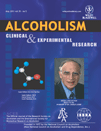Defining phenotypes in studies of tobacco and alcohol misuse is difficult because of the complexity of these behaviors and their strong association with each other and with other problem behaviors. The present paper suggests a strategy for addressing this issue by conceptualizing and partitioning variance in phenotypes into either general or substance/behavior-specific. The paper also applies the general or substance/behavior-specific conceptualization to environmental predictors of tobacco and alcohol misuse and other problem behaviors.
Data were drawn from the Seattle Social Development Project, a contemporary, ethnically diverse and gender-balanced longitudinal panel including 808 participants. Latent variable modeling was used to partition variance in young adult (age 24) nicotine dependence, alcohol abuse and dependence, illicit drug abuse and dependence, involvement in crime, and engagement in HIV sexual risk behavior into general problem behavior and behavior-specific variance. Similarly, measures of general, drinking-specific, and smoking-specific adolescent family environment were constructed.
Consistent with expectations, more positive general family environment during adolescence was associated with lower levels of shared variance in problem behaviors at age 24, but not with unique variance in tobacco or alcohol use disorder. Higher levels of family smoking and drinking environments during adolescence, however, were positively associated with unique variance in tobacco and alcohol use disorder, respectively, but did not predict shared variance in problem behaviors.
Results support the utility of the proposed approach. Ways in which this approach might contribute to future molecular genetic studies are discussed.
Read Full Abstract
Request Reprint E-Mail: jabailey@uw.edu
Data were drawn from the Seattle Social Development Project, a contemporary, ethnically diverse and gender-balanced longitudinal panel including 808 participants. Latent variable modeling was used to partition variance in young adult (age 24) nicotine dependence, alcohol abuse and dependence, illicit drug abuse and dependence, involvement in crime, and engagement in HIV sexual risk behavior into general problem behavior and behavior-specific variance. Similarly, measures of general, drinking-specific, and smoking-specific adolescent family environment were constructed.
Consistent with expectations, more positive general family environment during adolescence was associated with lower levels of shared variance in problem behaviors at age 24, but not with unique variance in tobacco or alcohol use disorder. Higher levels of family smoking and drinking environments during adolescence, however, were positively associated with unique variance in tobacco and alcohol use disorder, respectively, but did not predict shared variance in problem behaviors.
Results support the utility of the proposed approach. Ways in which this approach might contribute to future molecular genetic studies are discussed.
Read Full Abstract
Request Reprint E-Mail: jabailey@uw.edu



























